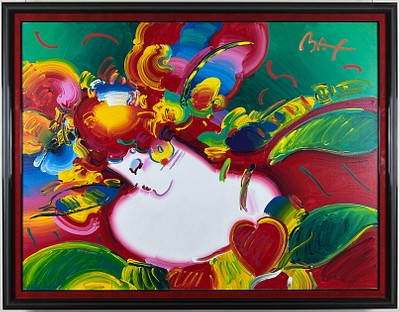Vasily Kandinsky Rollerball Pen
Lot 729
Categories
Estimate:
$200 - $400
Absentee vs Live bid
Two ways to bid:
- Leave a max absentee bid and the platform will bid on your behalf up to your maximum bid during the live auction.
- Bid live during the auction and your bids will be submitted real-time to the auctioneer.
Bid Increments
| Price | Bid Increment |
|---|---|
| $0 | $5 |
| $100 | $10 |
| $200 | $20 |
| $1,000 | $50 |
| $5,000 | $100 |
| $10,000 | $200 |
About Auction
By Scottsdale Art Exchange
Jul 29, 2023
Set Reminder
2023-07-29 12:00:00
2023-07-29 12:00:00
America/New_York
Bidsquare
Bidsquare : Our Annual Midsummers Day Auction
https://www.bidsquare.com/auctions/scottsdale-art-exchange/our-annual-midsummers-day-auction-13196
This auction will feature 900 amazing items. The Auction will include 300 items for our fine art gallery and over 600 items from our consignment partners. Scottsdale Art Exchange sue@firerockfineart.com
This auction will feature 900 amazing items. The Auction will include 300 items for our fine art gallery and over 600 items from our consignment partners. Scottsdale Art Exchange sue@firerockfineart.com
- Lot Description
Vasily Kandinsky (1866-1944) was a Russian painter and art theorist who is widely regarded as one of the pioneers of abstract art. He played a pivotal role in the development of abstract expressionism and was a key figure in the early 20th-century art scene. Here are some key points about Vasily Kandinsky: 1. Early Life and Education: Kandinsky was born on December 16, 1866, in Moscow, Russia. He initially pursued a career in law and economics but became increasingly drawn to the arts. In 1896, at the age of 30, he decided to study art and enrolled at the Academy of Fine Arts in Munich, Germany. 2. Development of Abstract Art: Kandinsky's artistic journey led him to explore increasingly abstract and non-representational forms. He believed that art should not merely imitate the visible world but rather evoke emotions and spiritual experiences through color, shape, and line. He considered art to be a form of pure visual expression. 3. The Blue Rider: In 1911, Kandinsky co-founded the artist group "Der Blaue Reiter" (The Blue Rider) along with Franz Marc. The group aimed to promote spiritual and abstract art and organized exhibitions to showcase their works. Kandinsky's book "Concerning the Spiritual in Art" (1911) became a seminal text on abstract art. 4. Synesthesia and Color Theory: Kandinsky had synesthetic experiences, perceiving colors and sounds as interrelated. This influenced his color theory, where he assigned specific emotional and spiritual qualities to colors. He believed that colors had the power to evoke specific emotions and create a direct connection with the viewer. 5. Composition and Form: Kandinsky developed a distinctive style characterized by dynamic compositions, geometric shapes, and bold use of color. He explored the interplay of forms, lines, and colors to create harmonious or dissonant visual effects that expressed his inner world and spiritual beliefs. 6. Later Years and Teaching Career: Kandinsky returned to Russia after the outbreak of World War I and became involved in the Russian Revolution. He held various teaching positions and was appointed as a professor at the Bauhaus, an influential German art school, in 1922. However, he left Germany in 1933 due to the rise of the Nazi regime and settled in France. 7. Legacy and Influence: Kandinsky's bold and innovative approach to abstract art had a profound impact on the development of modern art. His work paved the way for future generations of abstract artists and influenced movements such as abstract expressionism and geometric abstraction. His ideas and theories continue to be influential in the realm of art and art education. Vasily Kandinsky's contributions to abstract art, his exploration of color and form, and his theories on the spiritual nature of art have made him a significant figure in the history of modern art. His artworks continue to captivate viewers with their vibrant colors, dynamic compositions, and emotive qualities.Good condition. No rips, tears, creases.
Condition
- Payment & Auction Policies
-
Available payment options
-
-
- Buyer's Premium



 EUR
EUR CAD
CAD AUD
AUD GBP
GBP MXN
MXN HKD
HKD CNY
CNY MYR
MYR SEK
SEK SGD
SGD CHF
CHF THB
THB




















